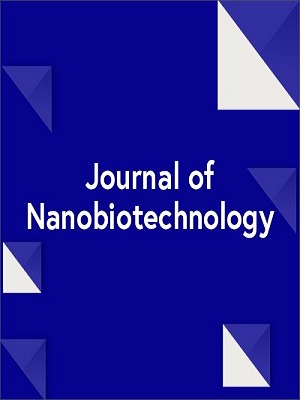脂质纳米颗粒(LNPs)的尺寸、表面电荷和 PEG 化脂类对肌肉内输送 mRNA 的作用
IF 10.6
1区 生物学
Q1 BIOTECHNOLOGY & APPLIED MICROBIOLOGY
引用次数: 0
摘要
脂质纳米颗粒(LNPs)是目前最常用的非病毒基因递送系统。脂质纳米颗粒的物理化学属性,包括尺寸、电荷和表面修饰,对其体内和体外行为都有显著影响。然而,这些属性对 LNPs 肌肉注射后的转染和分布的影响仍然难以捉摸。在本研究中,我们配制了具有不同大小、基于脂质的电荷和 PEG 化脂质的 LNPs,以研究它们的转染和体内分布。以荧光素酶 mRNA(mLuc)为模型核酸分子,将其包裹在 LNPs 中。结果表明,较小尺寸的 LNPs 和具有中性电位的 LNPs 在肌肉注射后具有更高的转染效率。令人惊讶的是,大小和电荷对 LNPs 的体内分布并无明显影响。此外,具有较短酰基链的 PEG 化脂类因其卓越的细胞摄取和溶酶体逃逸能力而提高了转染效率。值得注意的是,含有各种类型 PEG 化脂类的 LNPs 的细胞摄取机制各不相同,这主要归因于其酰基链的长度。这些见解共同强调了纳米粒子特性和 PEG 化脂类在肌内途径中的关键作用。这项研究不仅填补了重要的知识空白,而且为通过 LNPs 有效递送 mRNA 提供了重要方向。本文章由计算机程序翻译,如有差异,请以英文原文为准。
Role of size, surface charge, and PEGylated lipids of lipid nanoparticles (LNPs) on intramuscular delivery of mRNA
Lipid nanoparticles (LNPs) are currently the most commonly used non-viral gene delivery system. Their physiochemical attributes, encompassing size, charge and surface modifications, significantly affect their behaviors both in vivo and in vitro. Nevertheless, the effects of these properties on the transfection and distribution of LNPs after intramuscular injection remain elusive. In this study, LNPs with varying sizes, lipid-based charges and PEGylated lipids were formulated to study their transfection and in vivo distribution. Luciferase mRNA (mLuc) was entraped in LNPs as a model nucleic acid molecule. Results indicated that smaller-sized LNPs and those with neutral potential presented superior transfection efficiency after intramuscular injection. Surprisingly, the sizes and charges did not exert a notable influence on the in vivo distribution of the LNPs. Furthermore, PEGylated lipids with shorter acyl chains contributed to enhanced transfection efficiency due to their superior cellular uptake and lysosomal escape capabilities. Notably, the mechanisms underlying cellular uptake differed among LNPs containing various types of PEGylated lipids, which was primarily attributed to the length of their acyl chain. Together, these insights underscore the pivotal role of nanoparticle characteristics and PEGylated lipids in the intramuscular route. This study not only fills crucial knowledge gaps but also provides significant directions for the effective delivery of mRNA via LNPs.
求助全文
通过发布文献求助,成功后即可免费获取论文全文。
去求助
来源期刊

Journal of Nanobiotechnology
BIOTECHNOLOGY & APPLIED MICROBIOLOGY-NANOSCIENCE & NANOTECHNOLOGY
CiteScore
13.90
自引率
4.90%
发文量
493
审稿时长
16 weeks
期刊介绍:
Journal of Nanobiotechnology is an open access peer-reviewed journal communicating scientific and technological advances in the fields of medicine and biology, with an emphasis in their interface with nanoscale sciences. The journal provides biomedical scientists and the international biotechnology business community with the latest developments in the growing field of Nanobiotechnology.
 求助内容:
求助内容: 应助结果提醒方式:
应助结果提醒方式:


